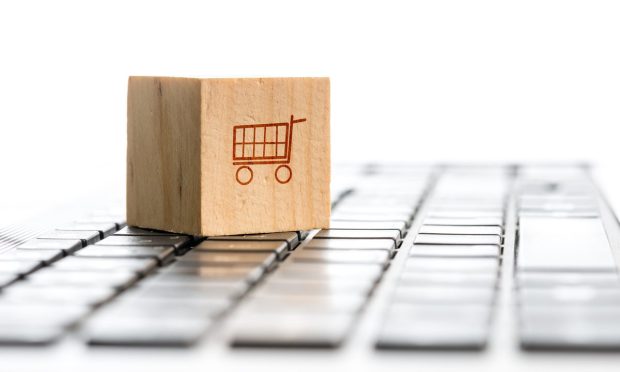Third-Party Marketplaces See Opportunity Around Amazon’s Margins

Looking at Amazon’s most recent earnings, you’d likely be impressed and not too concerned about a slowing in sales.
Those results reflect healthy business throughout the pandemic for thousands of Fulfillment by Amazon (FBA) locations, but those sellers are small businesses, and they may not be well positioned to absorb the supply chain-based throttling limits and load balancing common at FBA centers.
But Amazon isn’t a monopoly, and third-party sellers are figuring out that it isn’t the only online marketplace in town. For other platforms willing to put in the work, capturing even the slightest bit of share in a market that’s projected to grow exponentially over the coming years provides a compelling case for innovation.
Noting that the price of a 40-foot shipping container rose 80% to 100% to over $10,000 during the pandemic, Alasdair McLean-Foreman, CEO of marketplace optimization platform Teikametrics, told PYMNTS’ Karen Webster, “That trickles down to the third-party seller base.”
Amazon’s latest earnings report confirmed that more than half of units sold came from its third-party sellers, adding immense value to the platform, but McLean-Foreman said he sees a reckoning.
“Going back to 2020, [there’s been] hard blocking on certain inventory types, [and] consistently challenging [Inventory Performance Index (IPI)] scores varying by category,” he said. “If you’re on low-margin goods and you’re in a fiscally competitive category, it’s really challenging.”
FBA sellers’ growing frustrations are widening the aperture for others to enter.
See also: Retailers No Longer Compete Against Each Other, but Against Amazon Marketplace
Social Selling Will Scale
While Amazon talked up cost management with Wall Street analysts, McLean-Foreman said that “third-party sellers have seen their profits erode. The first time that Amazon’s ever cited and listed the revenues from advertising was this [latest] earnings report.”
With more of Amazon’s sales coming from third parties, its own supply chain headaches are mitigated. Still, he said, “Amazon is taking fees, and of course getting the ad revenue.
“The blended take rate for sellers on Amazon is approximately 30%, meaning Amazon’s take rate of the overall transaction,” McLean-Foreman continued. “That profitability is not necessarily seen by third parties, but of course, as pointed out in the earnings, Amazon has done well to optimize for its profitability.”
Competition Emerges
It’s led McLean-Foreman — one of Amazon’s original third-party sellers in 2003 — to wonder: “Where are the other marketplaces?”
They’re all around — and they’re ready to compete.
“We’re seeing a lot of growth on the Walmart marketplace, which is pretty nascent in the big picture but growing very quickly,” he said. “I think sellers will feel the pinch, will feel the squeeze of these changes, and they will be continually looking for other marketplaces to sell on and acquire customers more cheaply.”
That’s a good thing for startup shops in online marketplaces seeking the data and artificial intelligence (AI) direction and guidance required to sell efficiently and profitably online.
Noting the new selling pushes by major social media platforms — including the fact that Meta isn’t yet positioned to take on Amazon — McLean-Foreman said it’s all adding up to “an opportunity for sellers and brands and direct consumer businesses to find other channels other than Amazon.”
“Meta as an example, or Alphabet as an example, have proprietary data, first-party data on consumers that Amazon doesn’t have,” he noted. “Amazon knows what you buy. Facebook knows who you are. In a way, Meta is well-poised to be able to execute eCommerce; they just don’t have the fulfillment network.”
See also: Amazon Sellers Built for Speed and Scale
Optionality is Good
Walmart and a few others on the global stage can think about competing with Amazon, but the social platforms alone have their work cut out for them to become eCommerce threats.
It begins with the power of platforms to drive discoverability and generate invaluable data.
“Let’s take Instagram,” McLean-Foreman said. “Instagram is an opportunity for discovery. Where do those ads go today? They go to Shopify primarily, but if you look at the evolution of Instagram shops and the work that’s being done there, there’s an opportunity for Instagram to close the loop, to have a purchase experience where a consumer can buy without that friction [or] conversion rate loss due to different mechanisms, similar to what we expect with Amazon.”
It’s good news for a universe of small platform sellers that can expand to multiple platforms or choose one that’s better suited to their specific needs as marketplaces cater to niches.
“Out of all of the multitrillions of [gross merchandise value], one thing we know for sure is that the percentage of retail on eCommerce will increase,” he said. “The question is, where will it be? I don’t think it will all be centered around Amazon … Amazon’s growth rate was flat for eCommerce” in its latest earnings.
What does it all mean?
“I think it’s even better for brands,” McLean-Foreman said. “As a seller, we believe in this future to maximize the interests of the sellers, and the more optionality they have, the more opportunity.”
See also: Amazon Sellers Find Success Amid Regulatory Scrutiny
